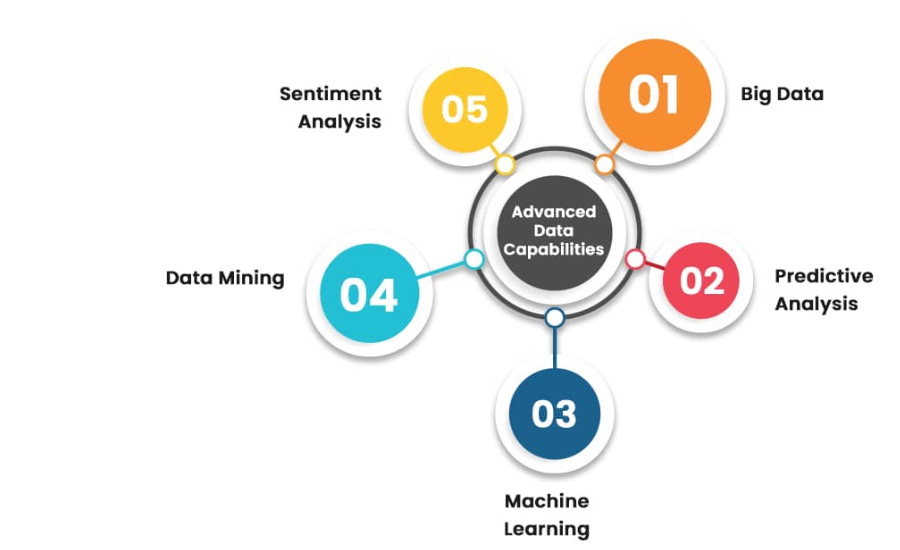Unveiling SSIS 469: An In-Depth Look At Its Features, Use Cases, And Future Prospects
SQL Server Integration Services (SSIS) 469 is an advanced ETL (Extract, Transform, Load) tool created by Microsoft to optimize the data integration process for businesses. Its design focuses on improving operational efficiency, allowing organizations to manage their data workflows more effectively. With a range of key features that facilitate seamless data extraction, transformation, and loading, SSIS 469 empowers users to handle complex data environments with ease.
This article delves into the practical applications of SSIS 469, highlighting its versatility in various business scenarios. It also addresses common challenges users may face, such as package complexity and performance bottlenecks, while providing best practices to maximize its effectiveness. As data integration needs continue to evolve, SSIS 469 is expected to adapt and incorporate future developments, further solidifying its role as an essential tool for effective data management.
Key Features Of SSIS 469

Flexible ETL Processes
A standout feature of SSIS 469 is its user-friendly visual development environment. This platform empowers users to design and tailor ETL processes according to their unique requirements. By utilizing a straightforward graphical interface, SSIS 469 facilitates the creation of complex workflows that connect various tasks and transformations, making it accessible even to those with minimal programming experience. This flexibility significantly accelerates the development process and enhances productivity.
Comprehensive Connectivity Options
SSIS 469 is renowned for its extensive connectivity capabilities. It can seamlessly connect to a broad range of data sources and destinations, including popular relational databases such as SQL Server, Oracle, and MySQL. Additionally, it supports various file formats, including CSV, TXT, Excel, and XML, as well as cloud services like Azure. This versatility allows organizations to integrate disparate data sources effortlessly, ensuring a smooth data flow across their systems.
Advanced Data Transformation Capabilities

The data transformation capabilities of SSIS 469 are both powerful and versatile. Users can execute a variety of data manipulation tasks during the ETL process, including data cleansing, aggregation, merging, and conditional splitting. These built-in transformations are crucial for maintaining data integrity and accuracy, allowing organizations to trust the insights derived from their data.
Scalability And Performance Optimization
SSIS 469 is designed with scalability in mind, enabling it to handle vast amounts of data efficiently. Its architecture supports horizontal scalability, which means workloads can be distributed across multiple servers or nodes. This ensures that SSIS 469 maintains optimal performance, even in high-demand scenarios, making it an ideal choice for organizations with significant data processing needs.
Robust Monitoring And Logging Features
Effective package management is facilitated by SSIS 469’s comprehensive monitoring and logging tools. The SSISDB catalog serves as a centralized repository for storing and managing packages, execution logs, and configurations. Additionally, the Integration Services Dashboard offers visual insights into the status of package executions, allowing users to quickly identify and address any issues that may arise.
Practical Use Cases For SSIS 469

Data Warehousing Solutions
Organizations frequently leverage SSIS 469 for data warehousing projects. By streamlining the extraction, transformation, and loading of data into centralized warehouses, SSIS 469 supports effective reporting, analytics, and decision-making processes. This capability is essential for businesses looking to harness the power of their data for strategic initiatives.
Simplified Data Migration
Data migration is another critical application of SSIS 469. The tool simplifies the process of transferring data between different systems, ensuring data integrity and consistency throughout the transition. This reduces the risks associated with data loss or corruption, making migrations smoother and more reliable.
Real-Time Data Processing
With its capabilities for real-time data processing, SSIS 469 enables organizations to analyze and respond to data insights almost instantly. This functionality enhances operational agility and allows businesses to make informed decisions in a timely manner, which is increasingly crucial in today’s fast-paced environment.
Challenges And Limitations
While SSIS 469 offers a wealth of advantages, it is not without its challenges. Users may face complexities during package development, performance bottlenecks in large-scale projects, and compatibility issues with legacy systems. Addressing these challenges requires thorough planning, skilled resources, and ongoing maintenance efforts.
Best Practices For Maximizing SSIS 469

To fully leverage the potential of SSIS 469, organizations should adopt several best practices:
- Design Modular Packages:
Creating reusable and modular packages can streamline development and ease maintenance efforts, reducing redundancy.
- Implement Robust Error Handling:
Comprehensive error handling and logging mechanisms are essential for facilitating quick troubleshooting and maintaining data integrity.
- Optimize Performance:
Fine-tuning configurations and selecting the appropriate data types can significantly enhance performance, particularly for larger datasets.
Future Trends In SSIS 469 Development

As data integration technologies continue to evolve, so too will SSIS 469. Emerging trends may include enhanced cloud integration capabilities, the adoption of containerization technologies, and the incorporation of machine learning functionalities. Improvements in monitoring and diagnostic tools are also anticipated, further increasing the efficiency and versatility of SSIS 469 in future implementations.
In summary, SSIS 469 stands as a powerful ETL tool that enables organizations to effectively integrate and manage their data. By harnessing its advanced features and adhering to best practices, businesses can navigate challenges and remain competitive in an ever-changing data landscape. The future of SSIS 469 promises to bring even greater capabilities, solidifying its position as a cornerstone in the realm of data integration.
FAQs About On SSIS 469:
Q1: What Is SSIS 469 And What Are Its Primary Uses?
Answer: SSIS 469, or SQL Server Integration Services 469, is a powerful ETL (Extract, Transform, Load) tool developed by Microsoft. It is primarily used for data integration and transformation processes, allowing organizations to efficiently extract data from various sources, transform it according to business rules, and load it into destination systems, such as data warehouses. Key use cases include data warehousing, data migration, and real-time data processing, enabling businesses to harness their data for analytics and decision-making.
Q2: What Are The Key Features Of SSIS 469?
Answer: SSIS 469 boasts several key features that enhance its functionality, including:
- Visual Development Environment: Users can design and customize ETL processes using a graphical interface, making it accessible for those with limited coding experience.
- Extensive Connectivity Options: It supports a wide range of data sources, including relational databases, flat files, and cloud services, facilitating seamless data integration.
- Data Transformation Capabilities: SSIS 469 offers built-in transformations for tasks like data cleansing and aggregation, ensuring data accuracy and integrity throughout the ETL process.
- Scalability And Performance: The tool is designed to handle large volumes of data efficiently, with the ability to distribute workloads across multiple servers.
Q3: What challenges Might Organizations Face When Using SSIS 469?
Answer: While SSIS 469 is a robust tool, organizations may encounter several challenges, such as:
- Complexity In Development: Designing and managing packages can be complex, especially for large-scale projects that require intricate workflows.
- Performance Bottlenecks: In high-demand environments, users may experience performance issues that necessitate careful monitoring and optimization.
- Compatibility Issues: Integrating SSIS 469 with legacy systems can pose challenges, requiring additional effort to ensure smooth data flows. Addressing these challenges typically involves thorough planning, ongoing maintenance, and skilled personnel to manage the ETL processes effectively.
Conclusion
In conclusion, SSIS 469 emerges as a vital tool for organizations seeking to optimize their data integration and transformation processes. Its user-friendly interface, extensive connectivity options, and robust data transformation capabilities make it an invaluable asset for managing large volumes of data efficiently. While challenges such as development complexity and performance issues may arise, the benefits of using SSIS 469 far outweigh the drawbacks. By implementing best practices and leveraging its advanced features, businesses can unlock the full potential of their data, driving informed decision-making and enhancing overall operational efficiency. As data landscapes continue to evolve, SSIS 469 is poised to adapt and remain a cornerstone in effective data management strategies.
Stay in touch for the latest updates and alerts by visiting our site: Today Magazine Point!






